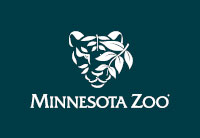Minnesota Zoo Media Contact
If you are a member of the press, please contact: Zach Nugent
Communication and Media Specialist
Minnesota Zoo
13000 Zoo Boulevard
Apple Valley, MN 55124
952.431.9534 direct
952-250-7293 mobile
[email protected]
The Minnesota Zoo is saddened by the sudden and recent deaths of four reindeer within the Zoo’s herd over a two week period. Initial samples tested by the USDA’s National Veterinary Services Laboratory point to a virus called Epizootic Hemorrhagic Disease (EHD). EHD is carried by white-tailed deer and is transmitted by small biting midges, or gnats, which are unfortunately prevalent in nature. The disease affects deer and other hoofed mammals. It is often fatal in deer species. Unfortunately, there is no vaccine and there is no treatment for the virus. There are no known health risks to humans.
The health and safety of animals and people is the Zoo’s top priority. The remaining reindeer at the Zoo have subsequently been tested and all are positive for EHD. They have been moved from their public habitat and are being closely monitored. Additionally, measures are being taken to make the reindeer exhibit less hospitable to these gnats.
We believe this is the first reported case of EHD in reindeer and remains one of the earliest confirmed cases of EHD found in Minnesota. It’s been a very challenging situation, but through it all there is an opportunity to help improve the scientific community’s understanding of this disease and how best to monitor for EHD and develop management and mitigation strategies. Working with the Zoo’s Animal Health and Conservation teams, we’re developing a monitoring plan to try to address some of the ongoing uncertainties, including where the virus is found and in what abundances, what additional insects may serve as carriers, and what’s the prevalence in potentially impacted wildlife elsewhere in the region.
Part of this process includes installing CO2 traps around the Zoo to monitor midges and mosquitoes, with longer-term plans to coordinate with outside agencies to monitor deer and the prevalence of EHD in wild populations. Many unknowns surround EHD and we hope these efforts can lead to a better scientific understanding of this virus.
This entire situation has been extremely difficult for our animal care staff, who dedicate themselves to providing the best care possible for animals at the Zoo. The Zoo will continue monitoring our reindeer and hoofstock populations while working closely with the Minnesota Board of Animal Health and the greater scientific research community.


